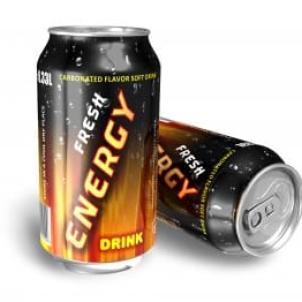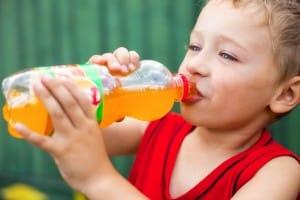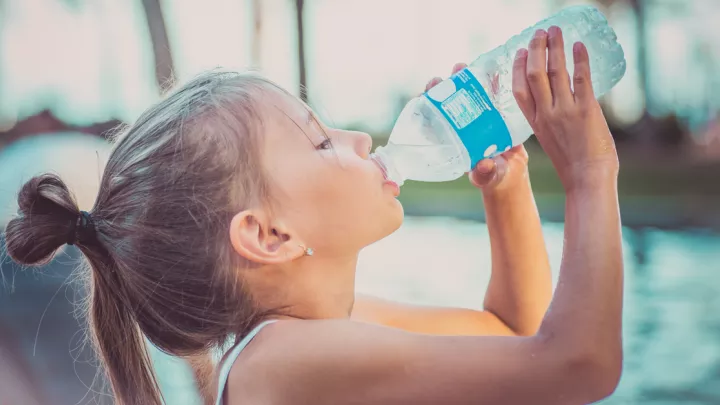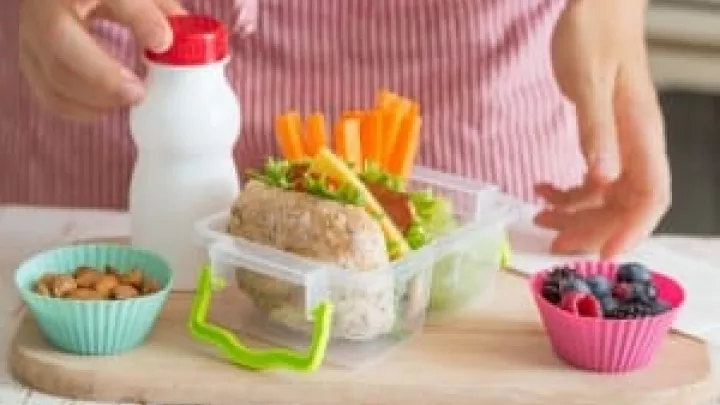
Dangers of Energy Drinks for Kids
Energy drinks have been popular for a while now. They are marketed in attractive, brightly colored cans small enough to put in a pocket or purse and easy for small hands to hold, and they taste like soda or sweet fruit juice.

Mostly consumed by teens and young adults, manufacturers are reaping the benefits of huge profits as the public downs a “pick-me-up,” which makes the companies reluctant to respond to cautionary comments from the medical establishment.
They are advertised to improve performance during exercise and are often confused with sports drinks such as Gatorade or Powerade, which contain sugar, electrolytes and some flavoring, and are consumed in larger quantities. Drinking the same amount of energy drinks can have serious effects on the body. The U.S. Food and Drug Administration does not presently regulate the additives in energy drinks because they are not considered a food, but a nutritional addition.
Calls to poison control centers cited approximately 40 percent involved children who have consumed energy drinks found in the home are under the age of 6.
Parents who consume energy drinks have to remember to place them in areas not accessible to their children, and have a conversation with children if they are consuming energy drinks in front of them.
Most of us use some sort of pick-me-up at various times in the day in the form of coffee, tea or a carbonated beverage. Coming from Britain, I love my cups of tea, but the caffeine content is tiny compared to energy drinks. I feel strongly that these beverage companies are irresponsibly marketing a product that is unregulated in the amounts of safe caffeine and sugar for children and adolescents.
The American Association of Pediatrics recently stated that during routine health check ups, the subject of energy and sports drinks should be talked about, as the AAP recommends that caffeine should not be part of a child’s diet.
Energy Drink Facts
- Caffeine content of 75 mgs to over 200 mgs
- May contain stimulants called guarana, ginseng and taurine
- Sugar content ranges between 1 and 2 1/3 teaspoons per 8 ounces of beverage
- Sodium content is 123 g per 8 ounces of beverage
The Risks
- Feeling jittery
- Restlessness
- Irritability
- Increased heart rate
- Increased blood pressure
- Sleep disturbances
- Seizures
- Tooth decay from the sugar
- Weight gain
I asked Linda Heller, MS, RD, manager of Clinical Nutrition and Lactation at CHLA, for her views on the risks and some alternatives for children attracted to these energy drinks.

“The beverage industry is enormous and very attractive to all ages—especially children,” says Heller. “However, the best advice may be the simplest: reach for cool, clear water to hydrate yourself and your child, offer milk or a milk substitute several times a day for adequate calcium and additional Vitamin D, limit 100 percent fruit juice to 4 to 6 ounces per day and avoid sugar-containing, caffeine-rich beverages for your child. Children can be very sensitive to caffeine since their body weight is much lower. Further, as a parent or caregiver, your example is powerful. Consider these recommendations for the entire family to avoid conflicting messages and inadvertent consumption of these beverages.”
Teens and young adults also have a habit of experimenting, which is why mixing alcohol and energy drinks has been popular among these age groups. Alcohol is easy to find and consume despite the legal age for drinking of 21. A desire for teens and young adults to stay on top of the lows of drinking alcohol has resulted in dangerous cocktails. Mixing alcohol and energy drinks has been concerning enough for universities to make available articles describing the risks of various cocktails.
Dangers of Mixing Alcohol and Energy Drinks
Courtesy of the Centers for Disease Control and Prevention
- Energy drinks are beverages that typically contain caffeine, other plant-based stimulants, simple sugars and other additives.
- They are very popular among young people and are regularly consumed by 31 percent of 12- to 17-year-olds and 34 percent of 18- to 24-year-olds.
- When alcoholic beverages are mixed with energy drinks, a popular practice among young people, the caffeine in these drinks can mask the depressant effects of alcohol.
- At the same time, caffeine has no effect on the metabolism of alcohol by the liver and thus does not reduce breath alcohol concentrations or reduce the risk of alcohol-attributable harms.
- Drinkers who consume alcohol mixed with energy drinks are three times more likely to binge-drink (based on breath alcohol levels) than drinkers who do not report mixing alcohol with energy drinks.
- Drinkers who consume alcohol with energy drinks are about twice as likely as drinkers who do not mix alcohol with energy drinks to report being taken advantage of sexually, to report taking advantage of someone else sexually, and to report riding with a driver who was under the influence of alcohol.
Things to Remember
- Keep energy drinks away from young children.
- Explain the effects and risks in a way that is understood according to their age.
- Don’t praise the physical pick-me-up you get from energy drinks and/or alcohol—this may sound inviting to curious preteens and adolescents.
- Be a responsible parent and limit the amount and access of alcoholic beverages and energy drinks in your home.
As a parent you need to:
- Have eyes in the back of your head
- Have excellent hearing and listening ability
- Be a motivational speaker
- Have strong detective skills
- Be a good role model
Our children are influenced in all sorts of ways beyond our control, but if you talk openly about risks (in this case of energy drinks and alcohol), you hope and trust they will listen to that small voice in their head (yours) before they make choices.


